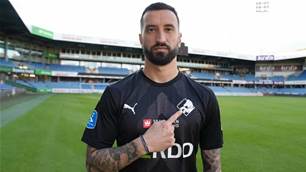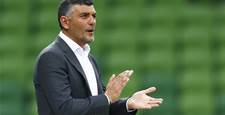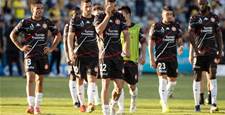OVER the past two decades Australia has been blessed with a generation of players who led the nation to consecutive World Cups. FourFourTwo takes a look at the clubs responsible for this production line of stars and whether we'll ever be able to match the talent we produced in the 'golden era'
Names like Ned Zelic, Paul Okon, Mark Viduka, the Vidmar brothers, Zeljko Kalac, Steve Corica and Jason Culina stand out in the pantheon of Australian football.
Each enjoyed long and successful careers overseas, and each has made a positive impact to the national team. But what do they and many other players who have worn the green and gold in the past two decades have in common?
Each player was the product of successful local football environments, and each played their first senior team football in Australia before departing.
Since the establishment of the A-League in 2005, it has been common practice to downplay the role of the National Soccer League (NSL) in Australia’s football history. Some prefer to conveniently forget the NSL even ever existed. But what cannot be forgotten is the part that the NSL clubs, and several in particular, played and continue to play in producing some of Australia’s greatest football talent.
The track record of Sydney United, South Melbourne, Adelaide City, Marconi, Melbourne Knights and the Brisbane Strikers in the role of talent development for the Socceroos in the past 20 years is simply phenomenal. But how did these clubs produce the Vidukas, the Vidmars, Okons and Culinas?
Continued on next page...
WESTERN SYDNEY WONDERLAND
The home grounds of Marconi and Sydney United sit less than four kilometres from each other in western Sydney. And it is at Bossley Park and Edensor Park where some of Australia’s football greats honed their trade.
The Marconi Stallions, formerly known as Marconi Fairfield, are a club rich in history and tradition, with strong links to the Italian community. An example of a Marconi product is former Socceroo Steve Corica, who joined the club in 1990 after a year at the Australian Institute of Sport (AIS).
“It was a good time for me,” says Corica, who spent five seasons with the club before heading overseas. “I was in the first team straight away. It took me a year or so to break into the first eleven. I got in the national team at 19. At the time, Marconi was the best club in Australia.”
Corica was coached by the likes of former Socceroo coach Frank Arok, and his time at the club saw a golden run of talent emerge – Paul Okon, Mark Schwarzer and a young junior by the name of Christian Vieri. This talent pool would continue in the mid 1990s with a fabled Marconi junior team featuring Harry Kewell, Brett Emerton and Paul Reid. “Marconi had a good development regime,” says Corica. “It was a big club at the time. You looked up to the great players that were there. You wanted to do the best you could.”
The production line didn’t end there with Michael Beauchamp, Michael Thwaite and Alex Brosque emerging from the club years later and Bruce Djite another notable product.
Paul Saliba, Marconi’s football manager, believes the club’s rich history helped create a strong development program. “Even prior to the commencement of the first ever national competition, the Philips National Soccer League, Marconi boasted a number of stars that participated in Australia ’s first ever World Cup finals appearance in Germany in 1974.
“Football greats like Rasic, Scheinflug, Schafer, Maher, Henderson, Prskalo, Sharne, Rooney, Richards, Krencevic, Jankovics, Gray, McCulloch and Calderan all created a desire for young players to succeed.”
Marconi was a club that gave young players a chance and allowed players to express themselves on the field, Saliba says, a policy that hasn’t changed. “To know you’re at a football shrine, it makes you want to play. If you are young and you’re given a go, take it with both hands and see it as a learning experience. What we’ve been doing with the Schwarzers, we’re still doing today.”
Saliba says the efforts of Sydney United on and off the field spurred Marconi on, as the clubs are virtually side-by-side. And Sydney United, formerly Sydney Croatia, were no slouches in the player development ranks either.
Zelkjo Kalac joined the club as a thirteen year-old and came through the ranks along with Mark Bosnich, Tony Popovic and Ante Milicic. In the years that followed Ned Zelic also joined Sydney United, along with future Socceroos David Seal and Mark Babic.
For former Socceroo goalkeeper Kalac, joining the club he supported as a boy was a no-brainer. “My Croatian heritage was a big pull,” says Kalac. “It was a massive family thing. I loved it.” Kalac says he was “probably lucky in a lot of ways”, as he was taught by quality coaches such as Ron Corry and Vedran Rozic, and began training with first-team goalkeepers Steve Watson, Tony Franken and Greg Woodhouse as a 15-year old.
“It was unbelievable,” he says. “I had a lot of people who believed in me. Ron Corry was responsible for me and Mark Bosnich, it speaks volumes.” Kalac made his first-team debut as a 16-year old, and says Sydney United was a club that “wasn’t scared to play young kids”. “We were kids playing with men,” he says. “We learnt to respect your older players. We were driven to succeed.” Kalac stayed with the club until 1995 when he moved to Leicester City, before returning for another two years with Sydney United. At that time a new era of playing talent at the club was taking shape.
Like Kalac, the pull of his heritage for David Zdrilic meant it was an easy choice to join Sydney United. “It was a dream come true,” says Zdrilic, who was 19 when he joined and it was at Sydney United where his career took off.
“It was quite amazing. I never thought I’d be a professional footballer. Every year it just got better and better. It just sort of happened, which is the best. It was unbelievable the amount of talent there at the club.”
Zdrilic came under the tutelage of coaches Rozic, Branko Culina and Manfred Schafer who gave him his first opportunity. “Sydney United was a good breeding ground,” says Zdrilic, who now coaches the first team. “It was a great environment to play in, there was so many great players. A young player would never be caught dead speaking to an older player or a coach. There was so much respect. It was a perfect forum to learn.”
Coming through the club at the same time as Zdrilic was a young midfielder by the name of Jason Culina. The Socceroo joined Sydney United as a 15-year old, when his family moved from Melbourne, with his father Branko taking up a coaching role with the club. Culina came under the guidance of David Mitchell and then his father, who played him in the 1997 NSL grand final at just 16.
“It was a very close-knit club, very professional,” says Culina. “The players were dedicated and motivated to do our best, to go to Europe. Players were given their chance at the right time.” Culina says his father “copped a lot of stick” at the time for selecting him, but says he is “all for giving young players a chance”.
“He gave Mark Viduka his NSL debut [at Melbourne Knights],” says Culina. “Jacob Burns at Sydney United. The generation from the 90s, more of those players were making it at the highest level in Europe. Now, you see less of that. There was more hunger back then.” Other Socceroos that spent formative years at Sydney United include Mile Jedinak and Joel Griffiths.
MELBOURNE MAGIC
Another football club with strong links to the Croatian community is the Melbourne Knights. Like Sydney United, the Knights have always put a strong emphasis on youth development and been blessed with producing awesome talent.
The crown jewel in that production line is most probably Mark Viduka, but it doesn’t stop with the former Newcastle United, Middlesbrough, Leeds United and Celtic striker. Other players to have come through the Knights system or had key spells at the club in recent times include Steve Horvat, Joe Spiteri, Danny Tiatto, Lubjo Milicevic, Matt Spiranovic, Adrian Leijer, Frank Juric, Ante Juric and Tom Pondeljak. Joey Didulica and Joe Simunic also played for the Knights, but both opted to play for Croatia instead of the Socceroos.
A young Jason Culina was also at the club and its feeder team St Albans as a junior, from the ages of 10 to 14. “It was great,” says Culina. “It was a very family-orientated club, very welcoming.”
Knights president Ange Cimera says the club was somewhat lucky, but has always focused on development and cites the influence of Croatian coach Mirko Bazic.
“He spotted the likes of Danny Tiatto, who no-one else wanted,” says Cimera. “We’ve always had good youth programs. We’ve always given young players a go; we give them a chance to develop. We’re still big on youth today.”
Apart from their role in developing a realm of Socceroos in the past 20 years, the Knights are still producing players, such as Melbourne Victory striker Mate Dugandzic. Cimera believes despite more money going into development today, the quality of players being churned out is not as high as it was in the 1990s.
“We’re the ones spending money and time on these kids,” says Cimera. “All the A-League players are developed by Premier League and lower league clubs. It’s a big, big miss. The A-League has been great, but the clubs still need Band Aids to keep them together. Unfortunately they have no junior sets up and developments. The youth league is only very new. I think it’s why soccer in this country is going backwards.”
Across town in Melbourne sits Bob Jane Stadium, overlooking Albert Park. This is home of South Melbourne FC and like its long-time cross-city rivals, another treasured production line of footballing talent.
Brisbane Roar coach Ange Postecoglou spent many years at South Melbourne, starting off as a nine-year old junior before progressing to the first-team, where he made nearly 200 appearances, and then becoming coach in 1996. Postecoglou says one of the reasons the Greek-associated South Melbourne was so successful in developing players was because of the coaching and the culture of the club.
Continued on next page...
“That was the most important thing,” says Postecoglou. “There was always a demand for success. Young players knew you had to be at their best to succeed. It attracted the best young players.
“Players just wanted to play for South Melbourne – like Paul Trimboli. They had a real desire to play for the club. It wasn’t anything by design.”
Postecoglou says the club “didn’t change coaches too often”, which helped, and he experienced coaching from the likes of Brian Garvey, former Socceroo boss Frank Arok and legendary Hungarian Ferenc Puskas.
In the past 20 years South Melbourne has produced a stream of players who have gone on to wear the green and gold.
Some progressed through the club’s junior programs, others just spent formative seasons playing there, but the list is long and it
includes Con Boutsianis, Con Blatsis, Michael Valkanis, Michael Curcija, Daniel Allsopp, Michael Petkovic, Kevin Muscat, Patrick
Kisnorbo and Kristian Sarkies.
THE CITY CONTIGENT
While Melbourne and Sydney have always boasted large catchment areas to attract players, that hasn’t always been the case for Adelaide City. However the club, formerly known as Adelaide Juventus and linked with the Italian community, has always punched above its weight in development.
Former Socceroo Tony Vidmar is one such player to come through the City ranks, along with his brother Aurelio, Carl Veart, Alex Tobin, Angelo Costanzo, and the Aloisi brothers, John and Ross. Vidmar, who joined Adelaide City as a 17-year old in 1987, says it is hard to put a finger on why the club produced so many Socceroos but a lot of credit has to go to the coach Zoran Matic.
“He seemed to get the best out of our players,” says Vidmar. “He assembled quite a good squad. He had a lot of experience. He was years ahead of his time. Everybody worked hard. Everybody knew their roles, and what other players had to do. It was a golden era then.”
Vidmar says Adelaide City had a great core of young talent coupled with experienced pros, such as Joe Mullen and Milan Ivanovic. “The best players were playing locally in those days,” says Vidmar. “Now there’s more than 150 players overseas. The environment, it had nothing to do with dollars, players just wanted to play. I don’t think there’s going to be that generation again. They were unique.”
Damien Mori, the all-time leading Socceroo goalscorer, is the current coach of Adelaide City. Mori, who spent long periods of his playing career at Adelaide City, as well as a stint as a 19-year old at South Melbourne, says both clubs are similar in that they had a great culture, which helped foster talent. “There was pride in wearing the shirt,” says Mori. “A winning mentality.”
STRIKING FOR SUCCESS
The Brisbane Strikers might not have the long history of an Adelaide City or a Melbourne Knights, but they do have a great track record in producing players.
Formed from the demise of Brisbane United in 1993, in the 1990s the Strikers boasted a fabulous blend of youth and experience. Queenslanders Clint Bolton, Kasey Wehrman and Jade North came through the ranks and went on to play for Australia, with the highlight a famous NSL grand final victory over Sydney United in 1997.
In the following years the club was boosted by the emergence of Jon McKain, Shane Steffanutto, Matt McKay and Michael Zullo. Kiwi forward Shane Smeltz was another product of the Strikers. Former Socceroo Kasey Wehrman attributes the club’s strong links with the Queensland Academy of Sport, which many of the Strikers players came through, and its culture of success combining to form a strong breeding ground for youngsters.
“With players like Alan Hunter and Rod Brown, there was a wealth of experience in the team,” says Wehrman, who spent four years with the Strikers. “You learned a lot. There’s still things I learned then that I use today, like the respect of the game. It put you in good stead later in your career.” The influence of coaches Bruce Stowell and Frank Farina was also important. “Frank Farina had the most influence on me, he had done it all before,” says Wehrman.
“He was Queensland boy as well, I could relate to him. He was the kind of coach you didn’t want to let down.” North Queensland Fury assistant coach Stuart McLaren spent several years playing and coaching the Strikers. He credits the influence of Stowell and the balance of the playing roster. “The coaches were in a situation to draw upon some great young talent,” says McLaren. “They were more than prepared to play these young players and give them an opportunity. Bruce knew what was required to play at the national level. There was the right blend of quality, experienced players with talented young players.”
THE AIS AFFECT
The contributions of the big six NSL clubs in player development in the past 20 years is something not to ignored. But, neither can the impact of Ron Smith and the AIS program.
From 1986 to 1996 Smith was the head coach at the AIS, nurturing the likes of Mark Viduka, Lucas Neill, Craig Moore, Joe Simunic, Kevin Muscat, Ned Zelic and Steve Corica. Remo Nogarotto is a former chairman of Marconi, Soccer Australia, Northern Spirit and a former director of football for the Newcastle Jets. He describes Smith as “the doyen of the football development community in Australia”.
“He introduced science,” says Nogarotto. “He didn’t try and over-engineer players. He finessed them. He is sorely missed.” Kevin Muscat is one player who went through the AIS under Smith and speaks highly of him. “I made the 1991 Youth World Cup because of Ron Smith,” says Muscat. “He adapted my game. If it wasn’t for Ron Smith adapting me from midfield to fullback, I wouldn’t have made the team. I’m very grateful, without a doubt. Someone of Ron Smith’s calibre, he’ still renowned for his level of coaching.”
The simple fact is, there’s no single factor why Australia produced such a rich pool of footballing stars in the past 20 years. There is no one golden reason why certain clubs experienced such strong bouts of player production. Great coaching undoubtedly had a role, as did the influence of the AIS in preparing youngsters for professional football. But players also possessed the hunger and drive to succeed and to break into the national team.
With no A-League, they were forced to go overseas to make a living and further develop. Timing and luck, undoubtedly, also played some small part. The simple lesson is that success breeds success, and cultures of excellence, hard work and encouragement are crucial. “Sport, like most things in life, is cyclical,” says Nogarotto. “The dream development decade started in 1985, and it closed in 1995. The game was blessed with the development of a number of outstanding footballers, attributed in part to coaching, and development techniques. It was a perfect storm of development. Every major club had a golden run of some outstanding young talent. Arok, Blanco, Thompson and Scheinflug were the vanguard of developing young football talent in Australia. Those four coaches, and Zoran Matic, were all true believers in developing young talent.”
It’s not just the six clubs profiled in this story that have contributed to the national team in the past two decades. Clubs across Australia have played their part. But from 1990 until 2005 there was less money in the game for development, for coaching and sports science, there were fewer opportunities for players and fewer pathways for aspiring professionals.
Today we have a fully professional A-League, a youth-league set up as well as numerous academies, the AIS and the traditional state league clubs. Despite the lack of resources in the past, a golden generation of talent was produced and it is debatable whether we will see the like of it again.
“It was a combination of all things,” says Bernie Mandic, manager of Harry Kewell and a former coach at Sydney Olympic. “There was a basic, fundamental road path for players to take. There are extraordinary individuals who haven’t been properly recognised. Ron Smith is not replaceable. Frank Arok, he pioneered the art of the shoestring budget and giving youngsters a go. There’s David Lee. Very special, dedicated people who put the game first. We’ve learnt nothing from the golden generation, which is the sad thing about it.”
This article appeared in the December 2010 issue of FourFourTwo magazine. To buy back copies of this issue call 03-8317-8121 with a credit card to hand.
Related Articles
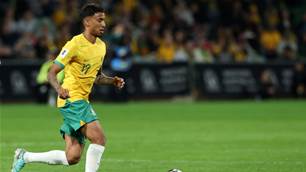
Socceroos midfielder embraces move to England
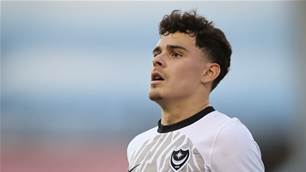
Cardiff City snap up sought-after Socceroos starlet
